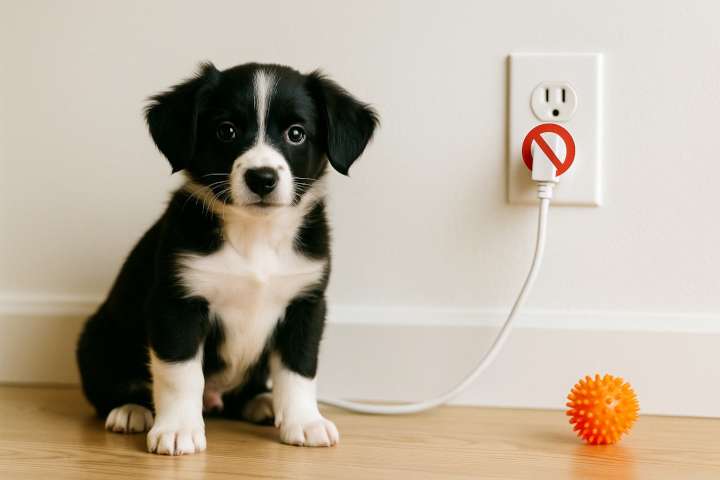Bringing home a new puppy is exciting—but it also comes with a new level of responsibility. Puppies are curious, energetic, and have a natural tendency to chew, explore, and get into things they shouldn’t. That’s why puppy-proofing your home is one of the first and most important steps to take before your new companion arrives.
In this guide, we’ll show you 10 essential things you must do to make your home safe, secure, and puppy-ready from day one.
1. Secure Electrical Cords
Puppies love to chew—and electrical cords can be dangerously tempting.
What to do:
- Use cord organizers, covers, or PVC tubing
- Block access to wires behind furniture
- Unplug unused appliances when not in use
2. Remove Toxic Houseplants
Many common houseplants are toxic to dogs if chewed or ingested.
What to do:
- Remove or relocate toxic plants like aloe, pothos, lilies, or philodendron
- Keep all plants out of reach on high shelves or in off-limits rooms
- Replace with pet-safe options like spider plants or bamboo palm
3. Use Baby Gates and Barriers
Limiting your puppy’s access to certain areas helps prevent accidents and damage.
What to do:
- Use baby gates to block stairs, kitchens, or carpeted rooms
- Set up a safe “puppy zone” with toys, bedding, and water
- Close doors to bathrooms, closets, or storage spaces
4. Lock Away Chemicals and Cleaners
Puppies may explore cabinets or lick up spills without hesitation.
What to do:
- Store cleaning supplies, detergents, and medications in locked or elevated cabinets
- Install child-proof latches on low cabinets
- Clean up spills immediately and rinse pet areas after mopping
5. Pick Up Small Objects
Puppies often chew or swallow small items that can become choking hazards.
What to do:
- Keep socks, coins, batteries, jewelry, and kids’ toys off the floor
- Regularly check under furniture for hidden objects
- Provide safe chew toys as alternatives
6. Cover Trash Cans
Food smells attract puppies—and trash cans can be dangerous and messy.
What to do:
- Use bins with secure, dog-proof lids
- Place trash cans inside cabinets when possible
- Be especially cautious with food scraps, bones, and plastic packaging
7. Check Windows, Balconies, and Screens
Puppies can squeeze through small spaces or accidentally fall.
What to do:
- Keep windows and doors securely closed or screened
- Never leave your puppy unattended on a balcony or terrace
- Inspect screens for damage or loose edges
8. Secure Toilets and Litter Boxes
Toilet water and cat litter can both pose health risks.
What to do:
- Always keep toilet lids closed
- Place litter boxes in areas your puppy can’t reach
- Train early to respect pet boundaries and bathroom areas
9. Hide or Store Shoes, Bags, and Clothing
Shoes and bags carry fascinating scents—and tempting materials to chew.
What to do:
- Store shoes in closets or on high racks
- Hang bags out of reach and keep zippers closed
- Avoid leaving laundry on the floor
10. Create a Safe Sleeping and Resting Space
Your puppy needs a calm, secure place to rest away from foot traffic and noise.
What to do:
- Set up a crate or soft bed in a quiet area
- Make it cozy with blankets and safe toys
- Avoid disturbing your puppy while they sleep—it helps them build trust and confidence
Bonus Tip: Supervision Is Key
Even the most thoroughly puppy-proofed home can’t replace active supervision. Always keep an eye on your puppy, especially during the first few weeks, and use leashes or indoor tethers if needed to prevent unwanted behavior.
Conclusion
Puppy-proofing your home is about prevention, protection, and peace of mind. With a few thoughtful changes and consistent supervision, you can create a safe environment where your new dog can explore, learn, and grow with confidence.
Want more setup tips? Check out our New Puppy Checklist for everything you need before the big day.

